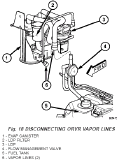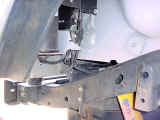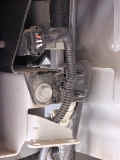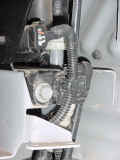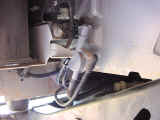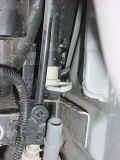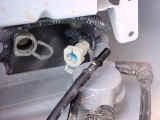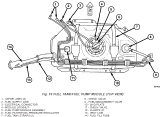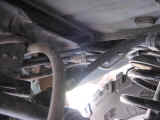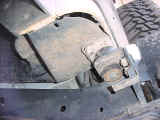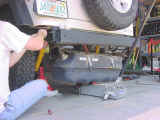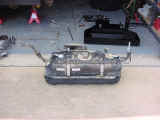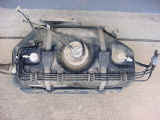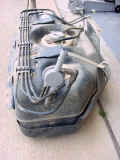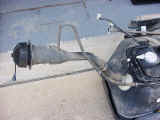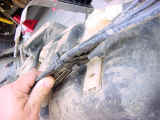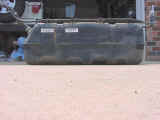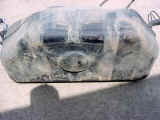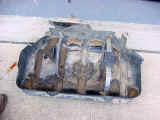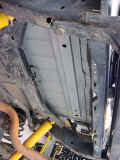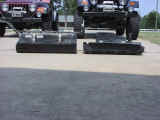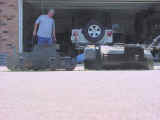| Installation: |
Here are a few pics of the Kilby's skid. |
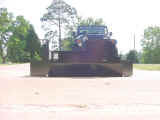 |
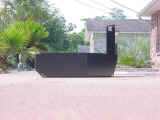 |
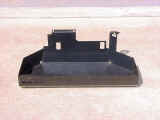 |
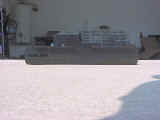 |
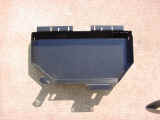 |
1. Release some of the pressure from
the fuel system. I took the below from the FSM, but didn't
follow the whole procedure to the end. Just took the high
pressure off the lines coming from the Fuel Pump. |
2. Remove fuel fill cap. You will need to take the tether out
of the plastic bezel also. It just pulls out. If it
doesn't, wait till you remove the bezel later then take it out.
|
|
3. Remove fuel pump relay from Power Distribution Center (PDC). For
location of relay, refer to label on underside of PDC cover.
|
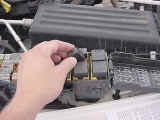 |
4.Start
and run engine until it stalls. Attempt restarting engine until
it will no longer run. Turn ignition key to OFF position.
Reinstall fuel pump relay. Some Jeeps may have a schrader
valve on the fuel rail underneath the hood that will allow you to
depressurize the line also. |
5. Disconnect negative battery cable.
|
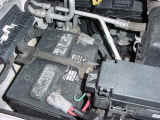 |
6. Using an approved portable gasoline siphon/ storage tank, drain
fuel from tank through filler cap opening. If required.
Note: Be careful of the spring loaded cover inside the filler hose.
It will pinch the siphon line, so you will need a long screwdriver
to hold it open when you pull out the hose.
|
|
7. Remove 8 screws retaining plastic fuel filler bezel to body.
Remove plastic fuel filler bezel. This may either be a T-25
Torx or a Phillips screwdriver.
|
|
8. To prevent contaminants from entering tank, temporarily install
fuel cap to fill hoses. |
|
9. Now Jack up the rear axle just high enough to get the tires off
the ground. Remove both rear tires. The FSM says only
the Right, but trust me. If you have really big tires, on,
I would suggest lowering the vehicle down after you get those tires
off, so that you can actually reach the gas tank with a floor or
transmission jack. If you got a couple buddies then they can
lift the tank for you.
|
| 10. Remove wheelhouse liner at right/rear wheel. This requires you
to pull about 7 small plastic trees out of the wheel well liner.
Then work it out from the bottom edge near the frame. It's a
little bit of a pain, but it will come. The top outer edge needs
to move in about an inch to disengage 2 prongs up there. |
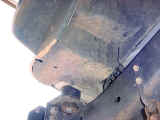 |
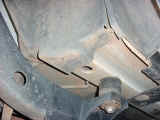 |
11. Now look towards the back of the opening you will see the Evap canister
and a bunch of hoses. You will also see a black cover (bracket)
in front of all of this. Remove vertical support bracket to
gain access to 2 ORVR vapor lines. 13mm socket (Deepwell).
|
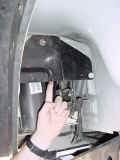 |
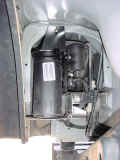 |
| Reinstallation: |
1. Place fuel tank into skid plate. Wrap straps around tank with strap
studs inserted through holes in skid plate. Tighten strap nuts to
attain 30 mm (±2 mm) between bottom of nut to end of strap stud
using a 13mm deep well socket. Do not over tighten nuts.
This wasn't anywhere close to what it was from the
factory so I choose to ignore this measurement. I tightened down
the straps until I couldn't move them anymore, then went 1 turn
more.
|
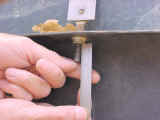
|
2. Install two protective caps to tank strap studs.
|
|
3. Connect fuel fill hose at tank if you removed it earlier. Tighten
hose clamp.
|
|
4. Raise skid plate/fuel tank assembly into position on body while
carefully guiding plastic vapor lines and fill hose. A floor
jack works well for this.
|
|
5. Install 7 skid plate mounting nuts. Tighten to 16 N·m (141 in. lbs.)
torque. You will need a 13mm socket and a couple extensions
to reach the ones in the front.
|
|
6. Remove tank jacking device.
|
|
7.Carefully
connect the 2 vapor lines near top of flow management valve. Be
very careful not to bend or kink the vapor lines. If lines leak,
a Diagnostic Trouble Code (DTC) will be set. The clips should
go in fairly easy, don't force them. If you are having a difficult
time take the line back out and put it in again, make certain it
goes all the way in.
|
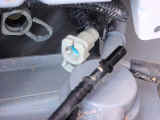 |
8. Install EVAP canister bracket.
|
 |
9. Install wheelhouse liner at right/rear wheel. Don't
forget to put all the trees back in.
|
|
10. Connect electrical connector at left/front of fuel tank.
|
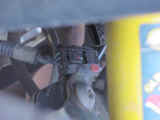 |
11. Connect 2 vapor lines at left/front of fuel tank.
|
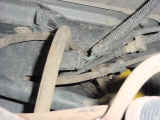 |
12. Connect quick-connect fitting to fuel supply line at left/front
of fuel tank.
|
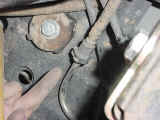 |
13. Use a new plastic tie wrap to secure rear axle vent hose to fuel
fill hose.
|
|
14. Remove gas cap and position fuel fill bezel to body. Install 8 screws
and tighten. You may
need a T-25 Torx or a Phillips screwdriver, be careful you don't
send anything down the tube.
|
|
15. Install filler cap.
|
|
16. Install Rear wheels.
|
|
17. Put required amount of fuel in tank, a couple gallons should be
good if you emptied it. |
|
18. Connect negative battery cable to battery.
|
 |
| 19. Start vehicle and inspect for leaks. |
|












